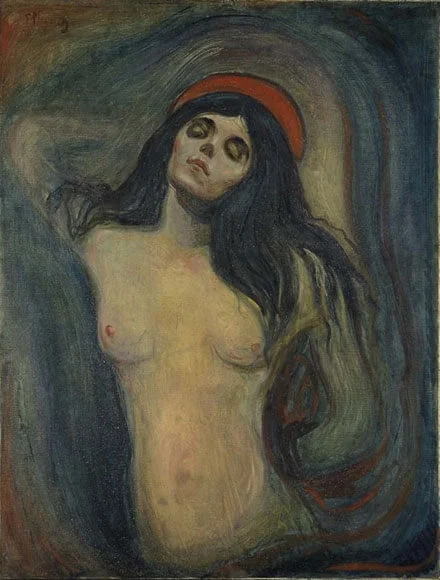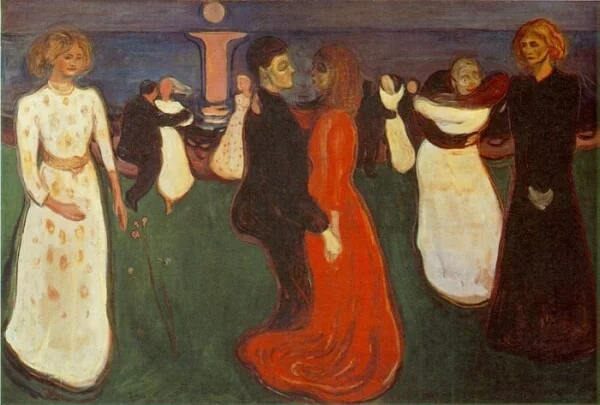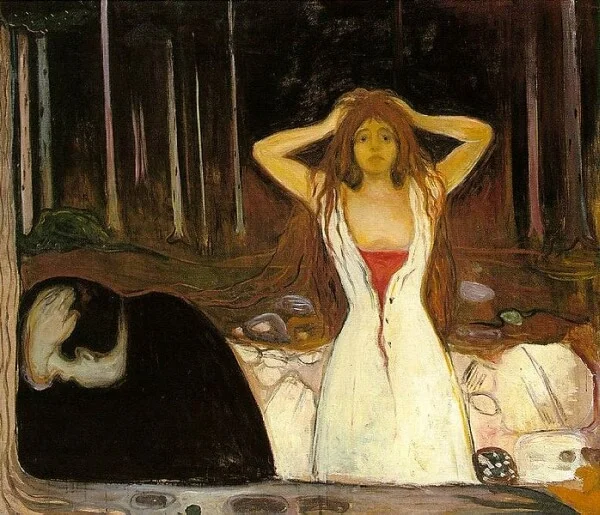Biography of Munch
(December 12, 1863)
Berlin
In the autumn of 1892, at the invitation of Verein Berliner Kuenstler (Association of Berlin Artists), an official organization consisting primarily of German academic artists, Munch traveled to Berlin to mount a retrospective of his work. The exhibit met with public outrage and was forcibly closed within days.

The Scream. 1893, Crayon and Tempera on Board, 83.5x66cm National Gallery Oslo, Norway

Death in the Sickroom. 1893, Oil on Canvas, 134.5x160cm, Munch Museum
The “Munch Affair” aggravated existing tension within Berlin’s art community. The younger dissenting members broke with the Verein to launch the Neue Berlin Sezession (New Berlin Secession) movement, an interpretive direction which became an integral part of the development of German Expressionism. Artists responded by establishing the Freie Künstler Vereinigung (The Union of Free Artists) to promote and preserve artistic creativity and to protest censorship.
The attention garnered as a result of the controversy worked to Munch’s advantage, bringing immediate notoriety within the circle of artists, writers and social critics. Polish poet Stanislaw Pryzbyszewski’s book Das Werk des Edvard Munch, co-authored with German art historian Julius Meier-Graefe was published in Berlin in 1894, adopting the term “psychological realism,” in regard to Munch’s work, as used by his contemporaries to describe him.

Madonna. 1894, Oil on Canvas, 90x68.5cm, Munch Museum
The “Affair” also provided Munch with unprecedented publicity, promising a significant German market for his art and carrying invitations to exhibit elsewhere in Germany, including Berlin’s Equitable Palast in December of the same year. Enjoying both financial and social benefits, Munch remained in Berlin for the next few years. It was here he met Swedish dramatist August Strindberg, whose plays carried themes of intense interpersonal relationships, rather the theatrical equivalent of Munch’s art. Munch later became acquainted with another well-known Scandinavian dramatist and fellow Norwegian, Henrik Ibsen, and Munch designed sets for Ibsen's Paris production of Peer Gynt. During his years in Berlin, Munch also met Norwegian cultural activist Dagny Juell, inspiration for numerous works, including Madonna, and The Hands. It is said that Juell remained the most influential woman in Munch’s life.
Munch’s work centered more around the graphic arts at this time, but he continued to pursue the completion of a cycle of paintings he called The Frieze of Life: A Poem about Life, Love, and Death. The first of the works in the series, including Melancholy, were exhibited on Unter den Linden, the fashionable Berlin Avenue, in December of 1893. Death in the Sickroom, a memorial to the death of his older sister, was included. By the following year Anxiety,Ashes, and the controversial Madonna, had been added. Other examples of some of Munch’s most renowned work are part of the cycle, including Jealousy, The Kiss, and The Dance of Life, as well as The Scream, one of the most ubiquitous images of modern art and popular culture. Although The Frieze of Life was essentially completed in 1893, it was not shown in its entirety until 1902.

The Dance of Life. 1899, Oil on Canvas, 49.5x75in, Nasjonalgalleriet

Ashes. 1894, Oil on Canvas, 120.5x141cm, Nasjonalgalleriet